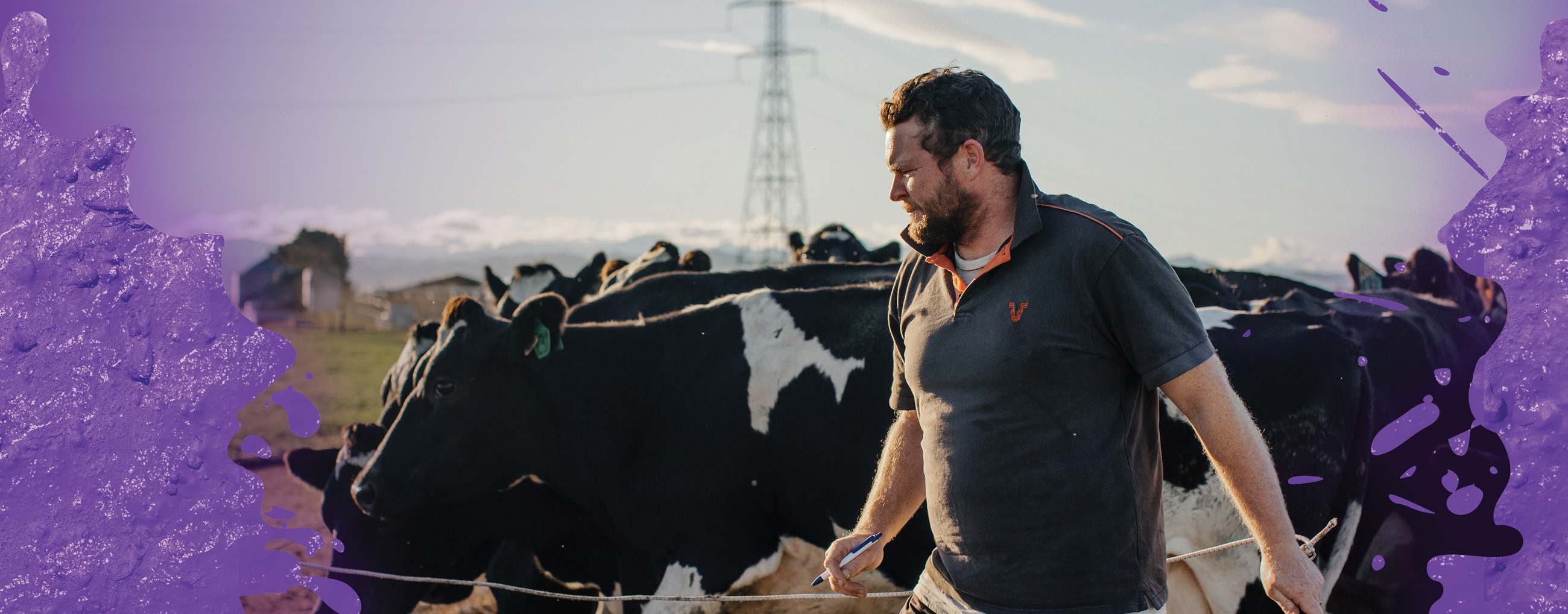
Cut the crap
Rotavec Corona – Calf Scours Vaccine
Rotavec Corona is the gold-standard for the prevention of calf scours.
- One shot to all cows and heifers annually
- No need to give two shots to heifers and previously unvaccinated cows
- No need to spend time identifying previously vaccinated cows
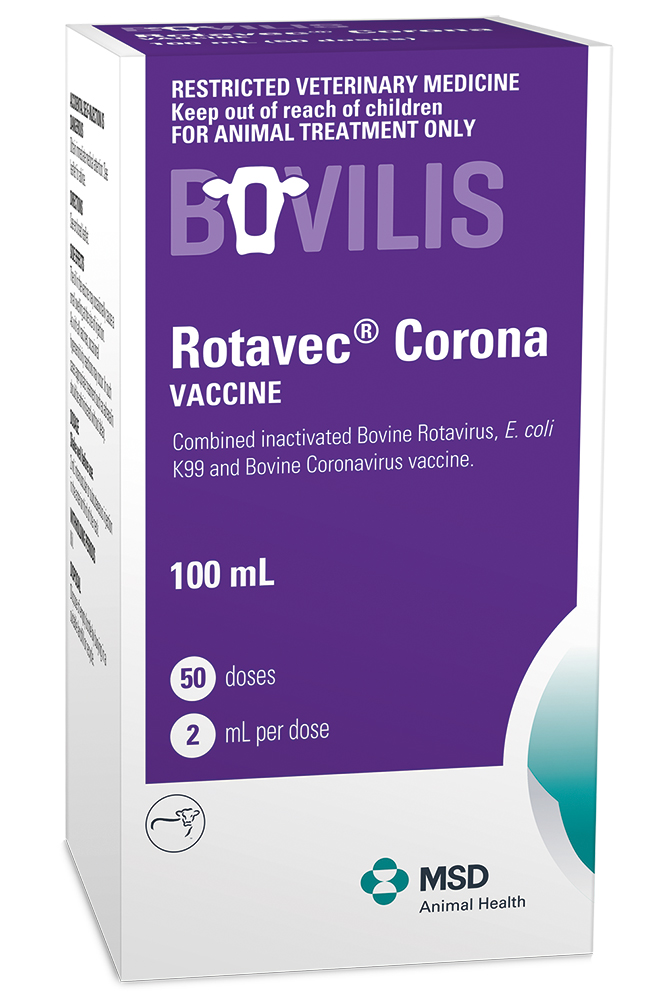
The risk of calf scours is high
The pathogens that cause calf scours are everywhere.
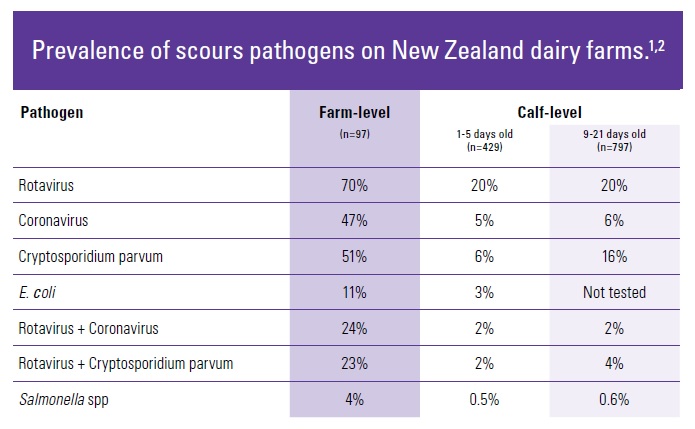
Rotavec Corona increases antibodies in colostrum and milk
Calves are born without antibodies to fight infection. They rely completely on high-quality colostrum for protection against scours-causing pathogens.
It is critical that calves receive enough of the right antibodies in colostrum, and then in transition milk, to reduce their risk of scours.
Rotavec Corona significantly elevates neutralising antibodies in colostrum and milk for at least 28 days post-calving3

Research shows Rotavec Corona vaccination boosts levels of both G6 and G10 antibodies.4
Cross-protection
Cows vaccinated with a single serotype produce antibodies to all serotypes to which they have had prior exposure. This response has been demonstrated by numerous researchers5,6,7.
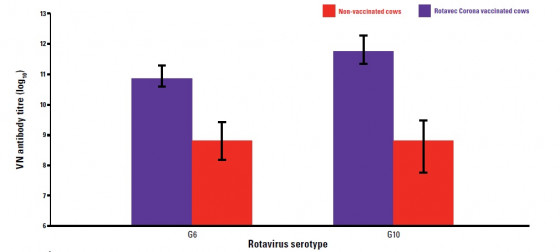
Reduces environmental contamination.
Faeces from calves fed colostrum from Rotavec Corona vaccinated cows contain less virus. This results in reduced environmental contamination and less likelihood of virus spread to uninfected calves.4
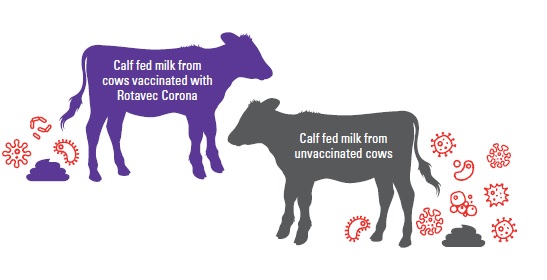
Administering Rotavec Corona
- 2mL dose by IM (intramuscular) or SC (subcutaneous) injection
- 42 day broach claim (unused vaccine must be discarded within 6 weeks of opening)
- A single injection should be given during each pregnancy between 12 and 3 weeks before calving is expected
- Calves must receive adequate colostrum from their dams to maximise antibodies transferred for protection
- Nil withhold
- Available in 40mL (20 dose) & 100mL (50 dose) pack sizes
About calf scours
Calf scours is not a singular disease; it is a clinical sign associated with several diseases characterised by diarrhoea.
Infectious scours are caused by bacteria (eg, E.coli, Salmonella),viruses (eg, Rotavirus. Coronavirus) and parasites (Cryptosporidium parvum) which are prevalent in the calf’s environment.
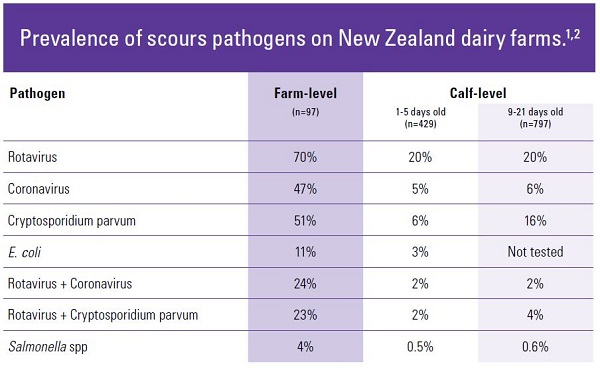
Various factors influence the incidence of infectious diarrhoea including but not limited to: calf immunity, level of environmental hygiene and management practices.
Calf scours has a significant impact – short and long-term.
Effect of calf scours on neonatal health and performance.
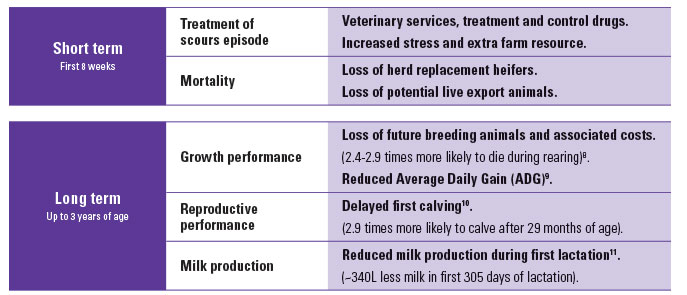
- Diarrhoea.
- Dirty backside/tail.
- Sunken eyes, droopy ears and posture.
- A reluctance to stand and feed.
Take a sick calf’s temperature. If the temperature is above 39.5oC it is likely to be infectious calf scours.
Speak to your vet, calves with scours need to be treated immediately.
Calves are born without antibodies to fight infection. They rely completely on high-quality colostrum for protection against scours-causing pathogens.
It is critical that calves receive enough of the right antibodies in colostrum, and then in transition milk, to reduce their risk of scours.
To receive enough antibodies calves must consume 10-15% of their body weight in high quality antibody-rich colostrum quickly (within the first 12 hours of life), so the maximum amount of antibodies can be absorbed prior to gut closure.
A gold-standard calf scours vaccination program with Rotavec Corona is the start of gold-standard colostrum production and management.
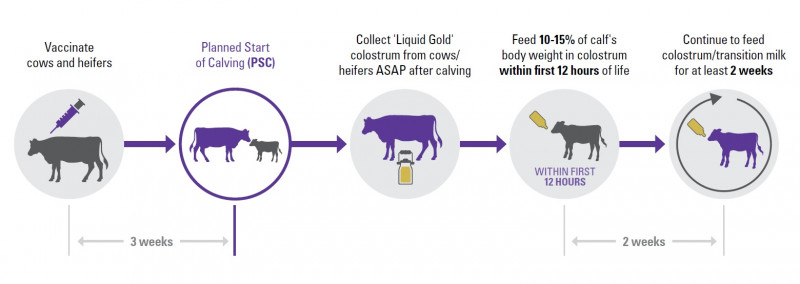
References
1.Al Mawly J, Grinberg A, Prattley D, Moffat J, French N. (2014). Prevalence of endemic enteropathogens of calves in New Zealand dairy farms. New Zealand Veterinary Journal 63:1–18.
2. Al Mawly J, Grinberg A, Prattley D, Moffat J, Marshall J, French N. (2015). Risk factors for
neonatal calf diarrhoea and enteropathogen shedding in New Zealand dairy farms. The Veterinary Journal 203:155–60.
3. Crouch CF, Oliver SP, Francis MJ. (2001). Serological, colostral and milk responses of cows vaccinated with a single dose of a combined vaccine against rotavirus, coronavirus and Escherichia coli F5 (K99). Vet Record; 149:105–8.
4. MSD Data on file.
5. Snodgrass DR, Fitzgerald TA, Campbell I, Browning GF. Homotypic and Heterotypic Serological Responses to Rotavirus Neutralization Epitopes in Immunologically Naive and Experienced Animals. 1991;29:2668–72.
6. Brussow H, Walther I, Fryder V, Sidoti J, Bruttin A. Cross-neutralizing antibodies induced by single serotype vaccination of cows with rotavirus. Journal of General Virology 1988;1005:1647–58.
7. Green KY, Taniguchi K, Mackow ER, Kapikian AZ. Homotypic and heterotypic epitope-specific antibody responses in adult and infant rotavirus vaccines: implications for vaccine development. Journal Infectious Diseases 1990;161.
8. Gulliksen SM, Lie KI, Løken T, Osterås O. (2009). Calf mortality in Norwegian dairy herds. J Dairy Sci; 92(6): 2782 – 95.3. Gulliksen SM, Lie KI, Løken T, Osterås O. (2009). Calf mortality in Norwegian dairy herds. J Dairy Sci; 92(6): 2782 – 95.
9. Donovan GA, Dohoo IR, Montgomery DM, Bennett FL. (1998). Calf and disease factors affecting growth in female Holstein calves in Florida, USA. Prev Vet Med; 33: 1 – 10.
10. Waltner-Toews D, Martin SW, Meek AH. (1986). The effect of early calfhood health status on survivorship and age at first calving. Can J Vet Res; 50(3): 314 – 7.
11. Svensson C, Hultgren J. (2008). Associations Between Housing, Management, and Morbidity During Rearing and Subsequent First-Lactation Milk Production of Dairy Cows in Southwest Sweden. J Dairy Sci; 91: 1510 –18.
Health risks & diseases
BVD (Bovine Viral Diarrhoea) is a viral disease of cattle which is wide-spread in New Zealand. Affecting both dairy and beef herds, it is estimated that about half of herds are “actively-infected” with BVD at any given time1 and the cost of BVD to the New Zealand cattle industry is around $150 million a year.2
BVD causes pregnancy loss, diarrhoea, milk drop, and reduced growth rates. It also suppresses the immune system, making animals more susceptible to other diseases, such as pneumonia and salmonella.
Research in New Zealand and overseas shows that it pays to control BVD; it is always more cost-effective to do something than to do nothing3. Moreover, a well-executed BVD control plan will help you achieve other farm goals, like improving animal welfare, reducing antibiotic usage, and improving reproductive performance.
BVD is spread by “persistently-infected” or “PI” cattle. The key to BVD control is therefore to find and eliminate PIs from within your herd, then protect your herd from contact with outside PIs. This can be accomplished by: monitoring the herd, testing individual animals, improving biosecurity, and strategically vaccinating ‘at-risk’ cattle.
For more information about BVD, including how to test for and control BVD click here
1 Han, JH et al. (2018). Using Bayesian network modelling to untangle farm management risk factors for bovine viral diarrhoea virus infection. Preventive Veterinary Medicine. 161:75-82.
2 The BVD Management Toolkit. BVD Steering Committee
3 Weir, A. (2016). Epidemiology of BVD in New Zealand dairy herds. Massey University PhD thesis dissertation
For information about prevention with Bovilis® BVD vaccine click here
Bovine Respiratory Disease (BRD) is a complex disorder of cattle causing respiratory disease and even death. It is caused by a combination of infectious agents and stress factors (weaning, transport, mixing, weather extremes, dust, handling and change of diet) acting on susceptible cattle in paddock and more intensive systems.
Signs of BRD include:
- Fever
- Depression
- Loss of appetite
- Dullness
- Coughing
- Rapid, shallow breathing
- Watery, then purulent nasal and/or eye discharge
- Excess salivation
Due to the intensification of farming, BRD may have a larger impact on New Zealand in the future than what we have seen historically. Most cattle are susceptible to BRD at some point, and it can impact performance.
For information about prevention with Bovilis® MH+IBR vaccine click here
Neonatal diarrhoea is arguably one of the most common diseases of newborn calves worldwide. The consequences on animal welfare and those managing the calves can be devastating. The cost of mortality, poor growth and performance as well as treatment costs, all need to be considered. The infectious agents that cause neonatal calf diarrhoea are prevalent in New Zealand. In a recent survey 96% of farms in New Zealand had pathogens that can cause calf scours detected1.
For more information about calf scours and calf health in general click here
For information about prevention with Rotavec® Corona vaccine click here


